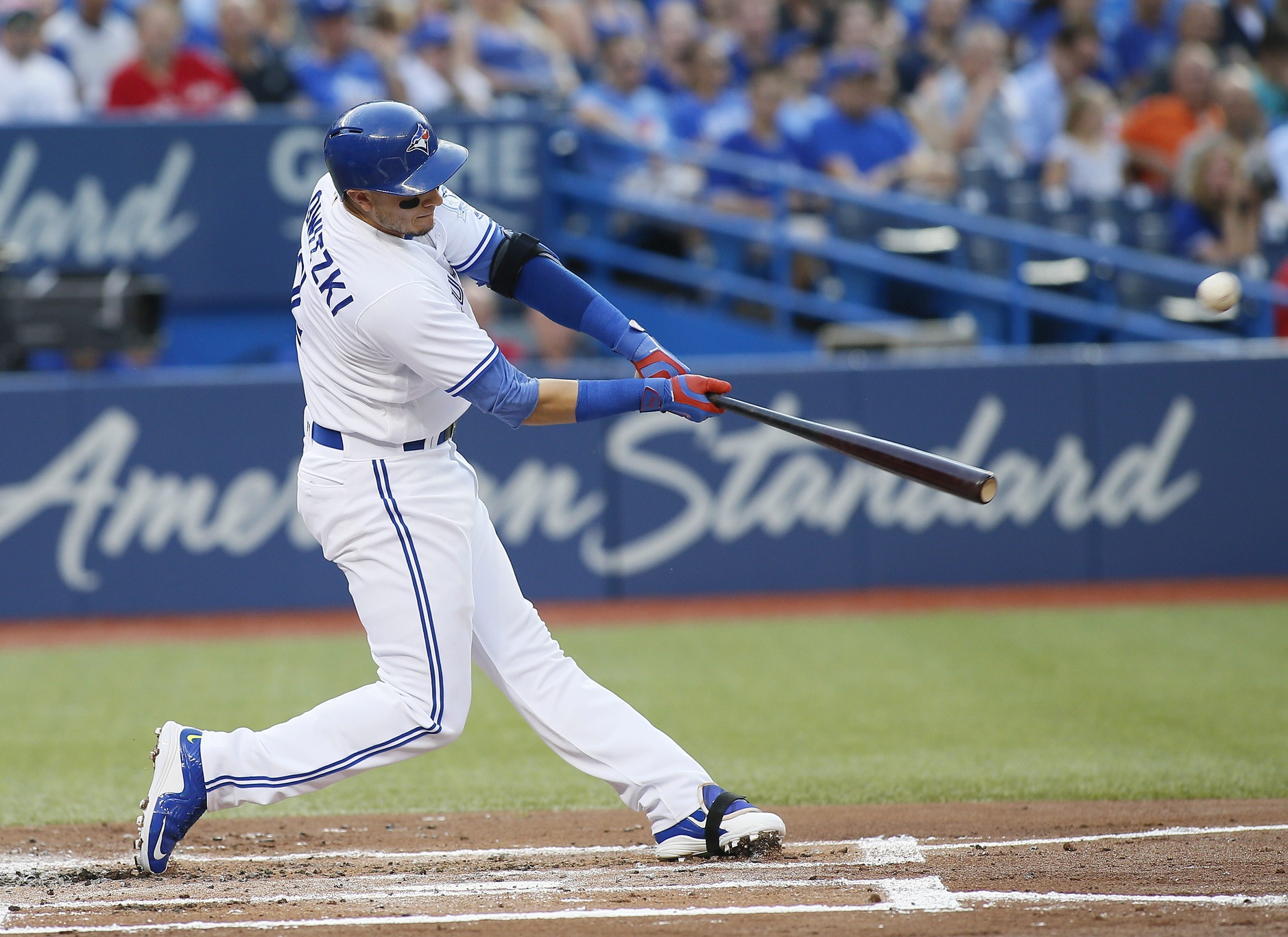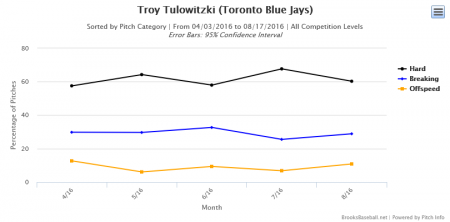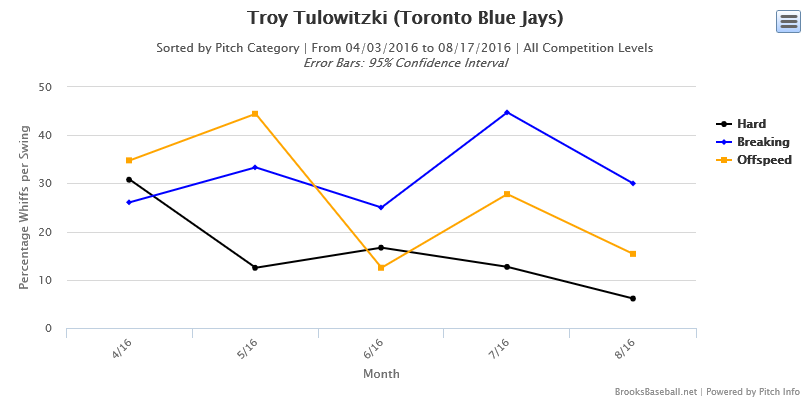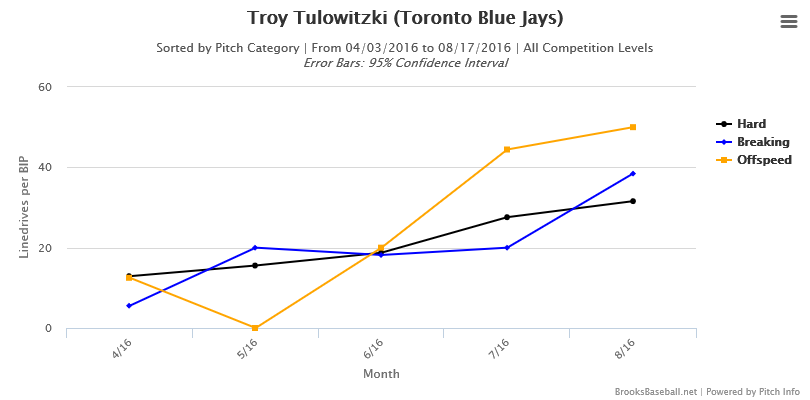On the cusp of the 2015 non-waiver trade deadline, the Blue Jays’ one glaring need was to improve the starting rotation. Thus, when it was announced in the wee hours of the morning on July 28th that then-General Manager Alex Anthopoulos had traded for arguably the best shortstop in the game, he not only shocked the baseball world, but put it on notice that he was building a team that would be competitive into the future.
At the time of the trade, Troy Tulowitzki was batting .300/.348/.471/.818 with 12 home runs, 53 RBI and a 1.8 WARP in 87 games with the Colorado Rockies. In his first game with the Blue Jays, in front of a home crowd of 27,060 – Jays’ fever had not yet swept through Toronto – Tulo went 3-for-5 with a home run and two doubles, driving in three runs in an 8-2 victory over the Phillies. The Tulo era had begun with a bang.
What began with a bang had fizzled by the time October rolled around. In his 41 games with the Jays last season, Tulowitzki posted a slash line of .239/.317/.380/.697 with just 5 home runs and 17 RBI with an amassed WARP of 1.1. Though he had a productive ALCS (.304/.304/.522/.826 in 23 plate appearances) his ALDS production was abysmal (.095/.174/.238/.412, also in 23 plate appearances). Tulomania was beginning to wane.
His offensive woes continued into the beginning of this season. Leading up to May 28th, when he was placed on the disabled list with a strained right quad, Tulowitzki was batting just .204/.289/.383 with 8 home runs and 23 RBI. Since returning to the lineup, however, Tulowtizki has been swinging a hot bat; he is now up to .257/.325/.476/ with 21 home runs and 63 RBI, amounting to a 2.4 WARP.
If one were to look at Tulowitzki’s pre-injury numbers this season, one might be led to believe that his turnaround in a Jays uniform did not begin until he came off the DL. However, he had started raking a good two weeks before going on the DL. From May 14th to August 16th, Tulowitzki has hit .307/.358/.547. Exactly what has been the reason for the turnaround this season? Let’s take a look.
First, let’s compare his plate discipline numbers. Given that 2015 was split between two teams, we shall consider the two halves of his season separately, along with his career norms.
| Year | O-Swing % | Z-Swing % | Swing % | O-Contact % | Z-Contact % | Contact % |
| 20151 | 30.1 | 63.6 | 45.6 | 67.3 | 85.7 | 79.2 |
| 20152 | 29.1 | 63.9 | 44.5 | 70.7 | 83.7 | 78.9 |
| 2016 | 29.8 | 63.4 | 44.8 | 71.6 | 85.4 | 80.3 |
| Career | 25.6 | 62.0 | 43.0 | 72.9 | 88.3 | 83.5 |
1With Colorado
2With Toronto
Though he is offering at more pitches both in and out of the strike zone than his career norm, he is making more contact than he did last season after he had joined the Jays, particularly on pitches in the zone. And although his contact rate is down compared to his career, which could be attributed to age, his overall contact percentage this season is closer to his previous levels than it was while he was in Colorado last season.
What he’s doing with that contact has changed over the course of this season. Although he’s seeing similar pitches, Tulowitzki’s whiffs per swing have dramatically decreased for all pitch types:
This suggests that he’s seeing the ball well and isn’t being fooled at the plate. In addition, Tulowitzki’s exit velocity has increased, leading to an increase in the number of line drives he’s hit over the course of the season:
Hitting line drives would indicate that he’s seeing the ball better, waiting for pitches he can drive, and then squaring them up. It could also mean an uptick in bat speed over the course of the season, which would obviously mean a mechanical change, but that is harder to prove.
This may not be the Troy Tulowitzki of the past, but one cannot expect him to be. Age alone will lead to marginal regression each season. But, what we saw out of Tulo during his first 80 or so games in Toronto could not be explained by natural regression alone. Adjusting to a new league and a new group of pitchers while at the same time uprooting one’s life to move to a new city (never mind a different country) are all factors that cannot possibly be measured, but Tulowitzki himself admits that it took time for him to feel comfortable in Toronto.
What is important is what we’re seeing from him now: a plus bat contributing daily to the offense in the midst of a playoff drive. Moreover, it is important to remember that Tulowitzki represents far superior offensive production and, by several defensive measures, superior defense than all in-house options, both past and present. The Jays are certainly paying for that production (he’s owed an average of $19.8 million per year through his age 36 season with a club option the following year), but if you’re going to spend money on a position, shortstop is an ideal position on which to spend it. He’s not likely to produce quite as his career norms into the future, nor should one expect that of him. But, assuming that his offensive woes since coming to Toronto are truly behind him, he ought to provide good value both at the plate and in the field.
Lead Photo: John E. Sokolowski-USA TODAY Sports





How is it that Tulo produced WARP at a higher rate for the Jays last year (1.1 WARP in 41 games) than he did for the Rockies (1.8 in 87) if his offensive production was so much better before the trade?